The number of regular live music photographers working around New Zealand in the pre-digital era was small. It was an exclusive club, not only because it took dedication with substantial time commitment and money, but because it took bravery to stand in and around tough, uncompromising crowds.
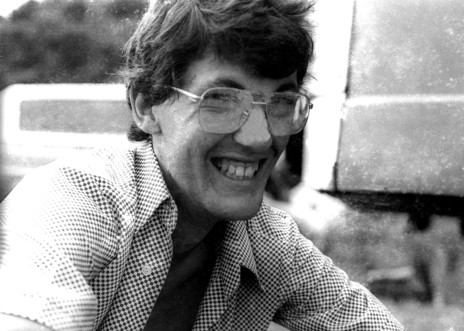
Sweetwaters, 1981: Anthony Phelps, photographing the Class of 81 bands.
Anthony Phelps was a schoolboy at Selwyn College in Auckland’s Kohimarama, studying photography as one of his sixth form subjects. Selwyn was a musical school and members of The Spelling Mistakes, The Features, Danse Macabre, Car Crash Set, Supergroove, The Terrorways, MC OJ and Rhythm Slave, Thorazine Shuffle, Herco Pilots, Betchadupa and Semi Lemon Kola are all alumni.
It was the brothers Russell (Nigel and Harry) who first began inviting punk and post-punk bands to the school in 1978, with the first being local stars The Scavengers mid-year. For Anthony it opened up a world of possibility. Here was a guy with access to a decent camera, dark rooms, and some of the best young bands in the red-hot new music scene that was transforming the live experience in Auckland. Over the next few months Anthony photographed other bands at the school – Toy Love, The Terrorways and school bands such as Retrox, featuring that young Nigel Russell.
From there, it was an obvious step to follow these bands to the venues they were playing at, in the city and surrounds: places like Rock HQ, The Occidental, The Windsor Castle and XS Café. There, he found other bands to photograph. Over the next five years Anthony took thousands of photographs and was the only photographer who focused almost exclusively on the young bands that came through. The only other photographer working in this scene throughout this period was Rip It Up’s Murray Cammick, but, by necessity and probably taste, Murray’s net was cast wider and captured the likes of Th’ Dudes, Hello Sailor and Street Talk.
Anthony’s images caught the punk, the post-punk, the early punk-funk, ska and the so-called North Shore Invasion bands. He also photographed the punk and new wave international bands that this crowd supported and attended. Along the way, he took probably the most iconic photo of the Auckland punk scene, that of Terrorway Dean Martelli’s hand playing his Burns Flyte guitar. A cropped version of that photo appears on the cover of the AK79 album and on countless T-shirts.
Until he stopped. In 1982, Anthony found full-time work as a news and sports photographer for newspapers and a new passion. By 1984, he was in Los Angeles photographing the Olympics and then later to London, working for the likes of The Times and Reuters, winning awards for his images. He still took sporadic photos of bands, including the 2008 AK79 reunion in Auckland’s old Zwines.
Most of these photos sat in his archives over the decades, and the Phelps collection acquired legendary status. Many had never been printed before, and those that had been printed were only seen by a handful of people. A few of us actively encouraged Anthony to do a book, and I can reasonably say I harassed him about it until he agreed and began to search, study and scan in 2020. Part of the magic of that process was being privy to the ongoing discovery by Anthony of photographs he had almost forgotten he’d taken. At one stage, I was sent images almost daily that blew my mind, some of which we leaked out to social media. The impressive end result of this is the book From AK79 to Class of 81.
There are a few things worth noting from the images and one that really stands out is how very young male this mostly is. The earlier punk bands had a strong female element – think Suburban Reptiles, the wonderful Idle Idols, Aliens and more. For some reason that dissipated for a few short years and most people in these images are boys, despite the reality that the crowds they drew and, often, their management and booking agents, were gender diverse.
The other thing that comes across is the pure, joyous camaraderie in these shots. These bands did not exist in isolation, they were just the performing part of very large social scenes – friends and family. The shot of the Class of 81 bands on the roof of XS Café is an image of people who often had known each other since primary school. They grew up together, played and partied together and sometimes married each other’s brothers and sisters. Most of the people in that image still know each other.
The other obvious thing is how transient all this was. These images show not one scene, but several that mutated quickly from one into the next, often in months, and the likes of Anthony Phelps and Murray Cammick had their work cut out keeping up with it all.
I asked Anthony to choose 12 images that mattered to him from his work, and here they are – although we ended up with 13 as the final one really matters.
Rooter
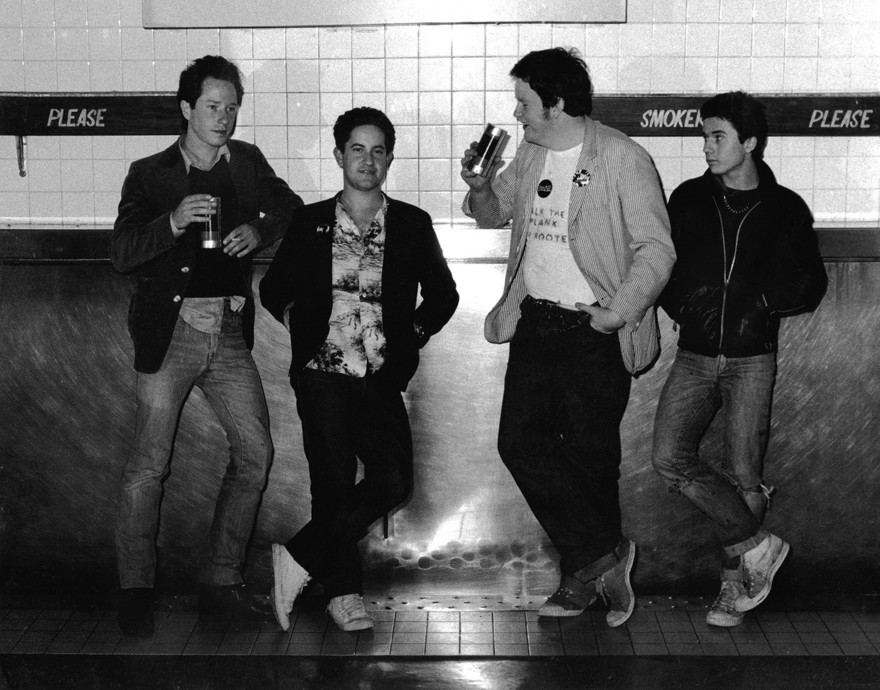
Rooter, at the State Theatre, Symonds Street. - Anthony Phelps
Before The Terrorways came Rooter, a bunch of suburban kids who, in the last half of 1977, started following the early Auckland punk bands (The Scavengers, Suburban Reptiles, Masochists and Junk can all claim to be in the first wave). I first saw these kids at a party I put on at a broken down semi-failed disco called D’Ora in Newton Road around October that year. They were dancing in the slime exuded by the faulty smoke machine designed to accentuate the no-longer turning mirror ball. One had a chequerboard dyed into his hair. By mid-1978, they were Zwines stars with a ton of great tunes and a big stage presence. The lack of bookings at other venues later forced a name change to The Terrorways. They recorded two tracks for AK79 and the best ever version of ‘She’s a Mod’. Kerry Buchanan went on to become one of New Zealand’s great music writers and can still be found exuding wisdom behind a record store counter.
The Knack
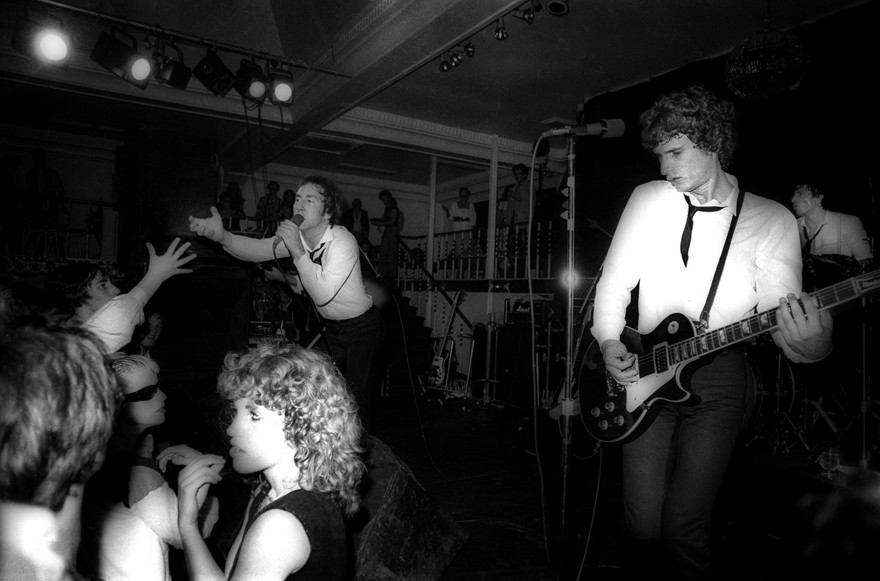
The Knack at Mainstreet, Auckland, 1979. - Anthony Phelps
1980 saw a rush of great UK and US punk bands to Auckland but before that came The Knack, from Los Angeles. On the back of that one big hit, The Knack came to New Zealand and, reluctantly, we all went. The thing was, everyone knew that they were not the real thing – these were “musos” in white shirts and narrow ties doing three-minute “new wave songs” because the eight-minute stadium nonsense they really wanted to play was past its sell-by date. Besides, ‘My Sharona’ was about as punk as Mi-Sex or Queen. However, it was all we had and so we trouped along to Mainstreet. And they were absolutely fantastic: short, sharp, take-no-prisoners power pop that made a lot of people very happy. I’m not sure anyone bought the second album though.
The Terrorways
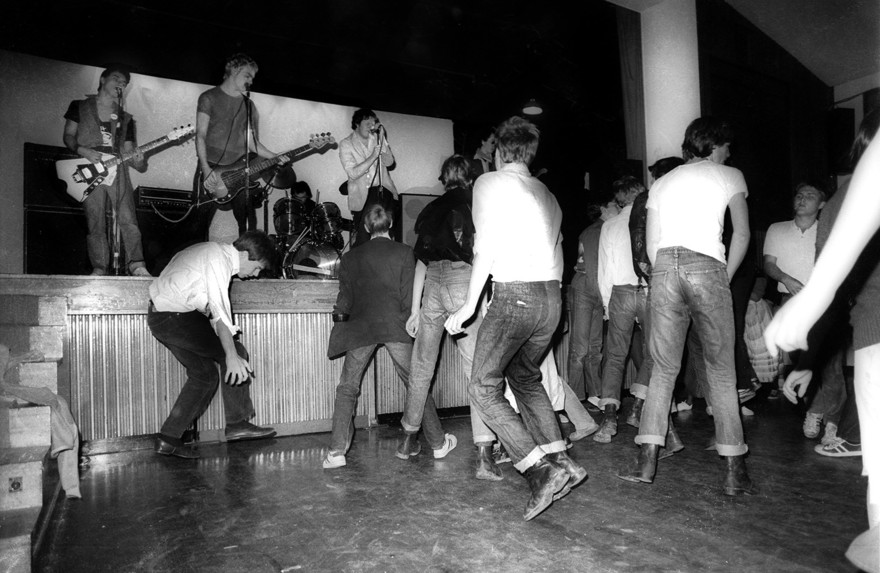
The Terrorways. - Anthony Phelps
Rooter, renamed Terrorways, visited Selwyn College as one of the lunchtime bands booked by the Russell brothers on 31 October 1979, with the drum stool now filled by Gary Hunt (ex-Gary Havoc and The Hurricanes) after Kerry Buchanan left to play rockabilly. They would break up a month later, only to reform briefly in March 1980 and again in October of that year for an official “farewell gig”. What’s interesting here is the way the cool kids from the suburbs had already adopted the post-punk uniform of Doc Martens, rolled up Levi’s and Hanes T-shirts.
The Ramones
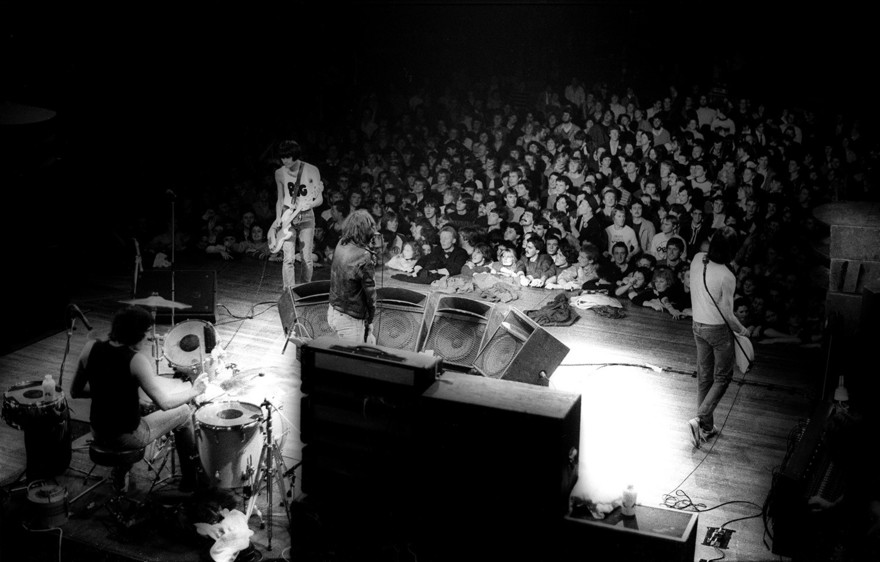
The Ramones, Auckland, 1980; note Joey's monitors. - Anthony Phelps
There had been a couple of overseas punk bands through venues such as Mainstreet, notably ska-punks The Members late in 1979, but the Ramones were the real deal and the July 1980 gig at the Logan Campbell Centre, despite the clinical nature of the venue, was a compulsory event and literally everyone went – and they still talk about it. Anthony somehow managed to talk his way up behind the band where he captured this unique perspective of one of the greatest bands of the 1970s when they were still in their prime. The Ramones said, unfortunately, it was the most violent show they had ever played, a sad reflection of the venue violence then plaguing Auckland and causing substantial damage to the scene.
The Spelling Mistakes
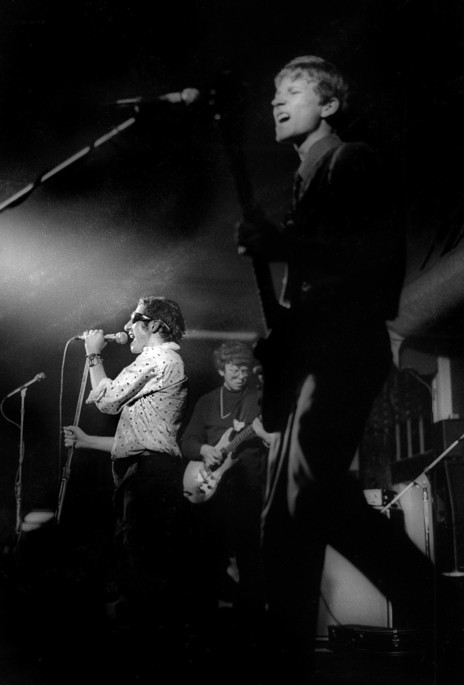
The Spelling Mistakes. - Anthony Phelps
One of the victims of the post-punk violence was the very popular band, The Spelling Mistakes. The band had grown out of the Zwines scene (Get Smart and The Aliens) adding Selwyn College’s Nigel Russell on bass. They had a Top 30 hit for my Propeller label with the anthemic pop-punk ‘Feel So Good’ but found themselves increasingly banned from venues because of a boot-boy following and resultant pressure from the cops. This great shot, taken at Mainstreet in late September 1980, is at an underage rage a month before they split for good.
Toy Love
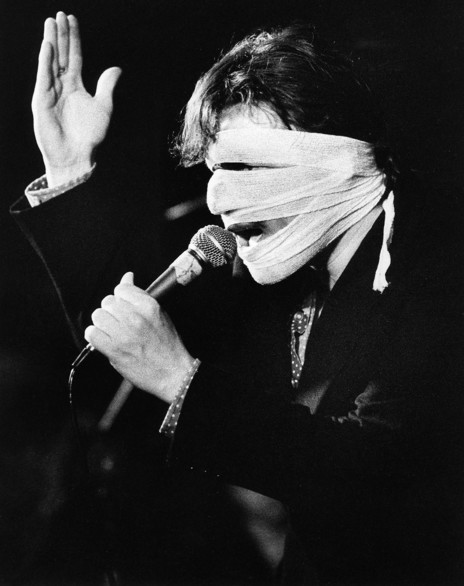
Chris Knox in Toy Love. - Anthony Phelps
The great hopes of the New Zealand punk scene, we were convinced they were going to take the world by storm and, indeed, the US and UK writers loved the band. Alas, they made the woeful decision to try Australia first as a stepping-stone on the way to Europe, and the land of Cheezels and vast booze barns ground our heroes down. So much so, they decided to split after their (triumphant) return tour of New Zealand. This photo of Chris Knox, at the band’s last gig at Mainstreet on August 19, 1980, is Anthony’s favourite and I can see why, given the way it captures both the menace and the humour in one of our greatest ever bands. They may not have taken the world by storm, but they ended up influencing generations of indie musicians and labels around the planet as the forebears to Flying Nun and much more. Told you so, Australia.
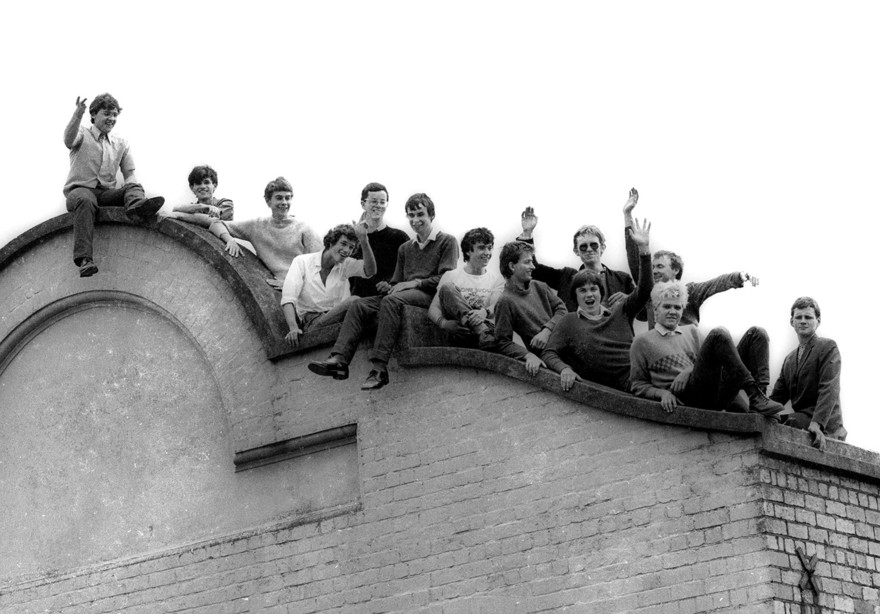
Class of '81 bands on the roof of XS Cafe, Airedale St, Auckland. - Anthony Phelps
As punk and post-punk wound down, another whole generation of bands arrived, influenced by the Zwines generation but too young for it. The North Shore was far enough away from the city and close enough to develop its own young band scene, centred around the schools and halls over the harbour bridge. The media called it the North Shore Invasion, but history has also recorded it as the Class of 81 scene, named after the album Propeller released that featured many of these bands. Every scene has an organiser and here it was a young man called Hilary (Hils) Hunt, who asked Anthony to photograph the bands, and he became their semi-official photographer. This image, on the roof of XS Café in Airedale Street, which had become the bands’ city-side home, features members of The Ainsworths, Regulators, Killjoys and the band who would become stars in 1981, The Screaming Meemees. The building was demolished within a few years to make way for Mayoral Drive. Hils is on the left, choreographing the shot of course.
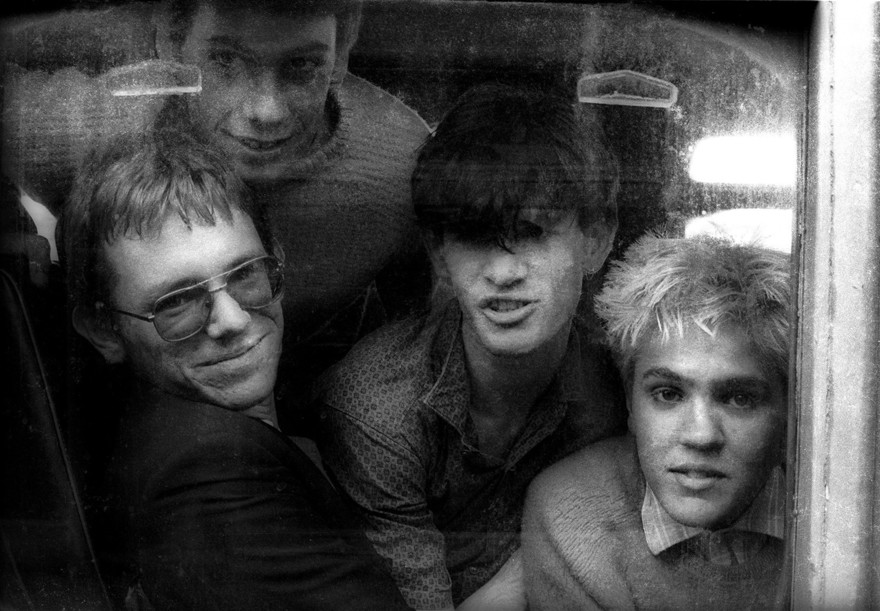
The Screaming Meemees. - Anthony Phelps
The same day the last photo was taken, Anthony took The Screaming Meemees down to the Parnell railway yards where this image was taken, in the window of an abandoned carriage. Possibly my favourite New Zealand band shot ever, Anthony gave me a large print around 1981 and it’s been on my office walls ever since. In the mid 2010s, when I told him it was faded from sunlight, he couriered me a brand new print. Ironically, until 2020 I thought this was taken before they headed south to Wellington for the first time. Now I know.
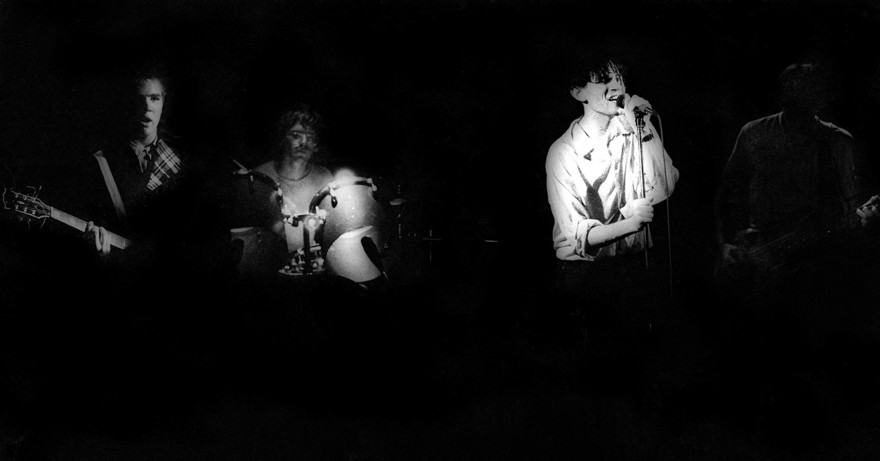
The Screaming Meemees, Mainstreet, Auckland.
By early 1981, The Screaming Meemees had generated a big enough fanbase – without a record or any airplay – to headline and fill Mainstreet (capacity around 1000, but often far more) as headliners. This image, however, was taken at the Class of 81 launch party, broadcast live on the-then Campus Radio B, but sold out with queues down Queen Street. Other bands included Blam Blam Blam, The Ainsworths and The Newmatics.
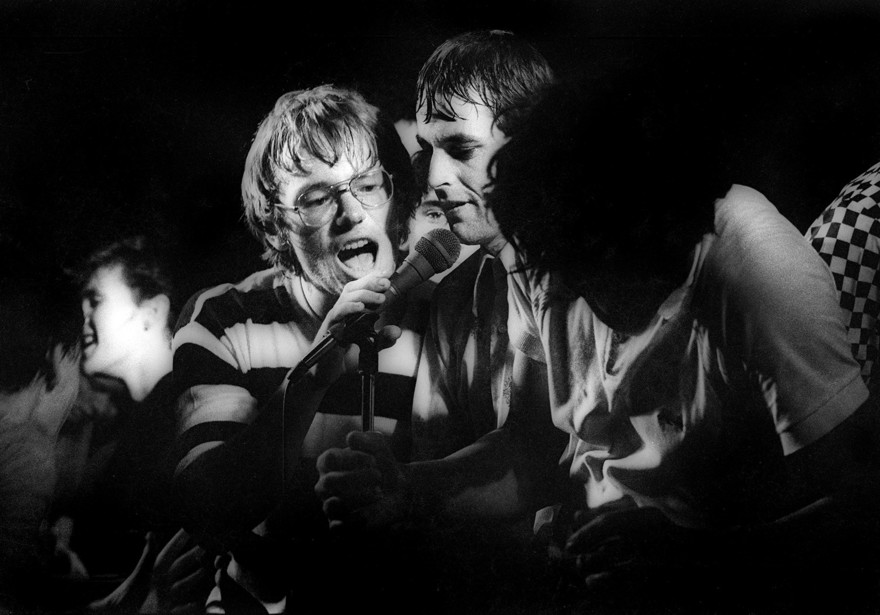
Yoh on the microphone. - Anthony Phelps
This may or may not have been taken at the Class of 81 show too, but the lineup in the chorus indicates that this was the all-star finale of that gig. Yoh, from the Meemees, on the microphone was a rare sight. Another wonderful image never seen before.
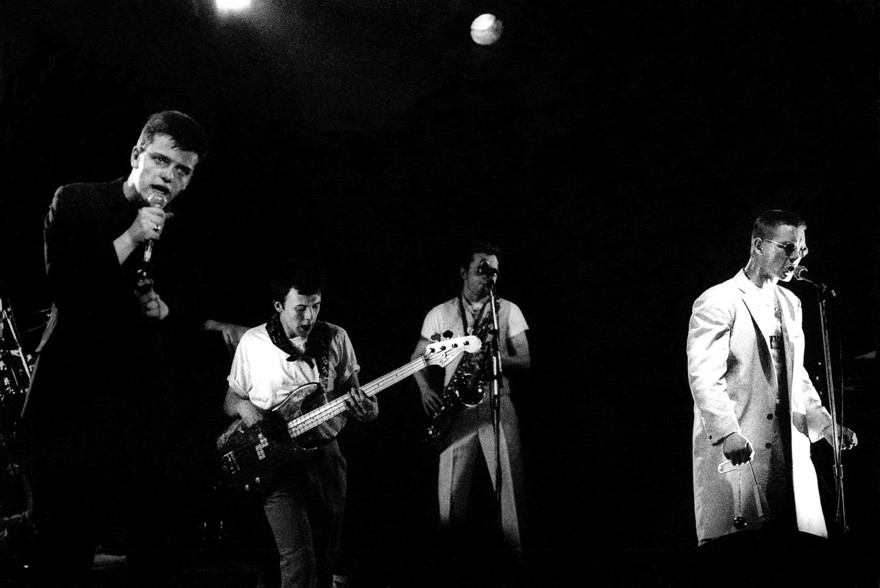
Madness, Logan Campbell Centre, Auckland. - Anthony Phelps
Somehow Auckland had found itself on the cool band touring circuit and they came through regularly. This is Madness at the Logan Campbell Centre in May, 1981. I thought they were wonderful but liked the support band, the Newmatics, more.
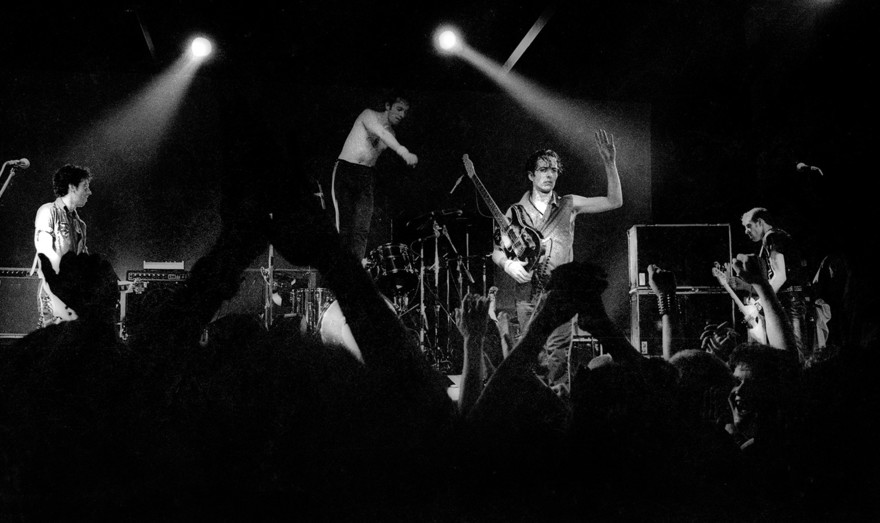
The Clash, Logan Campbell Centre, Auckland 1982.
The Clash arrived in Auckland in February 1982 and the city’s young folk swarmed into the Logan Campbell Centre as one. To most of us, they were the most important extant UK punk band, and they were high on a series of classic singles that continually pushed their boundaries. Little did we know they were slowly imploding and, after Combat Rock in May, would be gone in a few months. I suspect that even if we did know, it would have mattered little – this was The Clash! I was thrilled and relieved when, at the end of the show, Joe Strummer announced that “we are are off to see the Meemees at Mainstreet now”. Being up against The Clash that night was possibly as bad as it could get. They came and we were full.
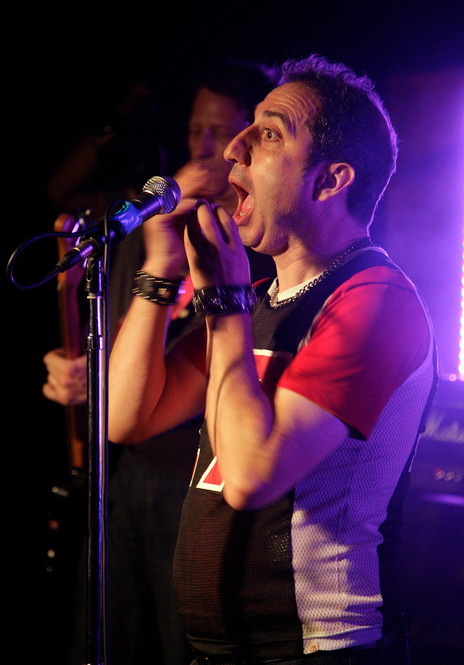
Spelling Mistakes, AK79 reunion, 2008. - Anthony Phelps
The wonderful Nick Hanson from The Spelling Mistakes at the 2008 AK79 reunion, inside the old Zwines in Durham Lane. The Zwines era bands and their crowd were older, some were worse for wear, but most were in good shape and it was appropriate Anthony Phelps was there to take the official photographs. RIP Julian Hanson.
--
Anthony Phelps' book From AK79 to the Class of 81, covering the years 1978 to 1982, with 180 photographs of bands, was published in March 2021. For information and more photos, go to his website.
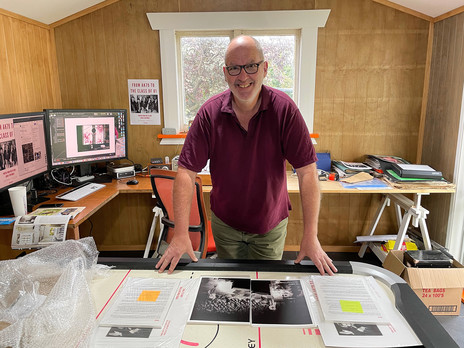
Anthony Phelps in 2021, preparing his book for publication.
--
The North Shore Invasion part 1 – building bridges
The North Shore Invasion part 2 – Class of 81
Murray Cammick: I didn't go looking for punk